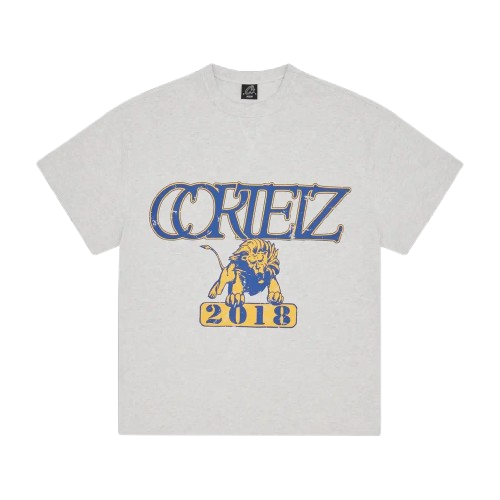Employee engagement is crucial for any organization seeking to improve productivity, reduce turnover, and create a positive workplace culture. As businesses continue to recognize the value of a highly engaged workforce, the demand for employee engagement surveys has grown significantly. These surveys help organizations measure employees’ feelings about their work environment, leadership, growth opportunities, and much more. However, not all employee engagement surveys are created equal. Enter employee engagement survey vendors—companies that provide sophisticated platforms and tools to help organizations capture, analyze, and act on employee feedback effectively.
In this blog, we will explore the key trends shaping the employee engagement survey industry and what to look for when choosing a vendor. From the integration of advanced technology to the increasing emphasis on continuous feedback, understanding these trends can help organizations make informed decisions when selecting a vendor and ensure they get the most out of their employee engagement efforts.
1. The Shift to Real-Time and Continuous Feedback
Traditionally, employee engagement surveys were conducted annually or biannually. However, organizations are increasingly realizing that waiting a full year to gather employee feedback is far too slow in today’s fast-paced business environment. To stay ahead of issues like disengagement, burnout, and dissatisfaction, more companies are opting for real-time, continuous feedback systems.
Many modern employee engagement survey vendors have adapted to this shift by offering platforms that allow organizations to collect feedback on a regular, ongoing basis—whether weekly, monthly, or even daily. Continuous feedback provides more up-to-date insights into employee sentiment and helps companies respond proactively to emerging issues. For example, vendors like CultureAmp and 15Five enable managers to send pulse surveys regularly, ensuring they receive a steady stream of data to keep a pulse on their team’s engagement levels.
The real-time nature of these platforms helps organizations pivot quickly to resolve problems, tailor their employee experience strategies, and drive meaningful improvements in workplace culture.
2. Integration with Other Business Systems
One of the major challenges organizations face is integrating data from various business systems—such as HR, payroll, performance management, and learning management systems—with employee engagement surveys. When these systems are not connected, valuable insights can get lost, leading to missed opportunities for improving employee engagement.
As a result, many employee engagement survey vendors now offer seamless integrations with a variety of third-party business tools. This integration enables organizations to have a comprehensive view of their employee data, including feedback, performance metrics, compensation, and professional development.
For instance, Qualtrics—a leader in the engagement survey space—allows users to integrate survey data with other business systems, such as HRIS (Human Resource Information Systems) and CRM tools. This integration makes it easier for HR teams to combine engagement data with other metrics, enabling them to drive strategic decisions that are informed by a holistic understanding of their workforce.
By using integrated solutions, businesses can tailor employee engagement programs to specific needs, such as targeting departments with low engagement or identifying high-potential employees for leadership development.
3. Advanced Analytics and Actionable Insights
Collecting data through employee engagement surveys is only the first step. The real value comes from interpreting that data to uncover actionable insights. Employee engagement survey vendors are increasingly relying on advanced analytics to provide deeper insights into employee behavior and sentiment.
Machine learning (ML) and artificial intelligence (AI) are now being used by survey platforms to analyze feedback more effectively. These technologies can identify trends, predict future engagement levels, and uncover hidden issues that traditional analysis might miss. For example, vendors like Glint use AI-powered analytics to measure and predict employee sentiment, helping companies understand potential causes of disengagement before they become widespread issues.
Additionally, modern survey vendors provide data visualization tools that turn raw data into easily interpretable graphs, charts, and reports. These reports can then be shared with leadership teams to make data-driven decisions. Customizable dashboards enable HR managers and executives to track specific metrics, such as team engagement scores, overall morale, and the impact of leadership changes, giving them a clearer picture of what’s driving employee sentiment.
4. Personalization of Surveys
No two employees are the same, and their feedback needs to be captured in a way that reflects their unique experiences. As a result, many employee engagement survey vendors are focusing on personalization features that allow organizations to tailor survey questions based on demographics, job roles, and other factors.
For instance, Officevibe allows organizations to customize their surveys to capture relevant feedback from different employee groups. By personalizing survey content, companies can ensure they gather data that is specific to certain teams or departments, helping to uncover insights that might otherwise be overlooked in a general survey.
Personalized surveys can also boost response rates, as employees are more likely to engage with surveys that feel relevant to their roles and experiences. Personalization enables vendors to create targeted initiatives to improve engagement in specific areas, whether it’s leadership development, career growth, or work-life balance.
5. Focus on Employee Well-being and Mental Health
The focus on employee well-being, including mental health, has grown exponentially in recent years, especially in the wake of the COVID-19 pandemic. In response to this trend, employee engagement survey vendors are increasingly incorporating well-being-related questions into their platforms.
Many vendors now offer dedicated surveys that assess employees’ mental health, work-life balance, and overall well-being. Platforms like TINYpulse and SurveyMonkey provide surveys that include questions specifically about stress levels, burnout, and workplace support, giving HR teams valuable insights into the emotional and psychological state of their employees.
This trend reflects a broader shift toward caring for employees’ holistic needs—physical, emotional, and mental. By leveraging engagement surveys to assess well-being, organizations can create more supportive environments, reduce burnout, and improve employee retention.
6. Employee Engagement Beyond the Workplace
Another emerging trend in employee engagement surveys is extending the focus beyond just the workplace. Increasingly, employee engagement is viewed as part of an individual’s overall life experience, not just their job performance. This shift is prompting survey vendors to include questions about an employee’s life outside work, such as their family situation, personal development, and community involvement.
Vendors like Peakon, for example, enable organizations to gather insights not just about employee engagement but also about employees’ overall happiness and life satisfaction. This broader perspective on employee engagement is helping organizations create work environments that are aligned with employees’ personal values and life goals.
When organizations take a more holistic approach to engagement, employees feel more valued and are more likely to stay with the company long-term. These insights allow employers to offer more relevant support, be it through flexible working hours, mental health days, or programs that promote work-life balance.
7. Gamification and Engagement Incentives
To increase engagement with their surveys and encourage more participation, many employee engagement survey vendors are incorporating gamification elements into their platforms. Gamification makes the survey process more interactive and enjoyable, driving higher response rates and providing a more dynamic experience for employees.
For example, some platforms offer rewards, points, or badges for completing surveys or achieving certain milestones, such as consistently providing feedback over time. These features help to reinforce positive behaviors and increase employees’ willingness to participate in surveys.
Gamification also fosters a culture of continuous improvement and recognition, making employees feel more engaged in shaping their work environment. This trend not only increases participation in surveys but also promotes long-term engagement with the entire feedback process.
Conclusion: Choosing the Right Employee Engagement Survey Vendor
As organizations continue to prioritize employee engagement, selecting the right vendor for conducting surveys has never been more important. The key trends in the employee engagement survey industry, including real-time feedback, advanced analytics, well-being focus, and personalization, are transforming how organizations measure and enhance employee engagement. When choosing a vendor, it’s crucial to evaluate these features carefully to ensure the platform can meet your specific needs and drive meaningful change.
Ultimately, employee engagement surveys are more than just a tool for gathering feedback—they are a critical component of an organization’s strategy for creating a thriving, engaged workforce. By leveraging the latest technologies and focusing on continuous improvement, businesses can foster a culture where employees feel valued, supported, and empowered to do their best work.









16 Comments
Zakłady sportowe i gry w jednym miejscu? Tylko w Mostbet | Z Mostbet możesz zagrać na automatach, ruletce i w pokera | Grając w Mostbet masz dostęp do wsparcia technicznego 24/7 Rejestracja Mostbet
Ten serwis świetnie porównuje oferty bonusów kasynowych | Doskonałe źródło wiedzy o legalnych grach w Polsce | Przydatne porady jak wypłacić pieniądze z konta | Wszystko opisane prostym językiem, bez zbędnego żargonu | Kasyna dostępne na urządzeniach mobilnych – to duży plus | Porównywarka kasyn idealna do szybkiego wyboru | Możliwość gry bez depozytu – duży atut tej strony | Doskonałe kasyna z grami typu slot i ruletka | Najciekawsze opcje gier dostępne w kasynach kasyno online polska.
Mostbet to legalne kasyno online dostępne dla graczy z Polski. | Sprawdź aplikację mobilną Mostbet dla wygodnego dostępu do gier. | Korzystaj z programu lojalnościowego Mostbet i zbieraj punkty. | Skorzystaj z opcji cash-out dostępnej w Mostbet. mostbet rejestracja
Mostbet podporuje mobilní hraní bez omezení | Mostbet login je rychlý a bezpečný | Mostbet online casino nabízí jackpoty a turnaje mostbet login.
Pinco az-da qeydiyyatdan keçmək cəmi bir neçə dəqiqə çəkir|Pinco ilə real pul qazanmaq mümkündür|Pinco kazino oyunları keyfiyyətli və müxtəlifdir|Pinco ilə onlayn mərclər çox rahatdır|Pinco bonus şərtləri ədalətlidir və şəffafdır|Pinco ilə kazinoda oyun daha maraqlıdır|Pinco az onlayn kazinosunda etibarlı ödəniş üsulları var|Pinco promo kodu yeni istifadəçilər üçün əlverişlidir|Pinco kazinosunda istənilən vaxt oyun oynamaq mümkündür pinco casino login.
1win az platformasında təhlükəsiz və sürətli ödəniş üsulları mövcuddur | 1win platformasında yeni başlayanlar üçün təlimatlar mövcuddur | 1win-də canlı dilerlərlə oyun təcrübəsi yaşayın | 1win az saytında müxtəlif ödəniş üsulları mövcuddur1win platformasında istifadəçilər üçün müxtəlif təkliflər mövcuddur | 1win mobil tətbiqi ilə istənilən yerdə oyun oynayın1win-də müxtəlif ödəniş üsulları ilə rahatlıqla pul yatırın | 1win platformasında istifadəçilər üçün müxtəlif bonuslar təqdim olunur | 1win-də müxtəlif idman növlərinə mərc edin | 1win azərbaycan saytında müxtəlif oyun növləri mövcuddur | 1win mobil tətbiqi ilə istənilən yerdə oyun oynayın 1win az.
Хорошее решение для закрытия командировок — готовые чеки. | Помощь в срочной отчётности — действительно работает. | Отчётность становится проще с такими сервисами. | Рекомендую, если не хотите лишних проблем. | Детально прописаны все услуги на чеке. | Подходит и для командировок, и для закупок. | Есть возможность заказа с НДС или без. | Много положительных отзывов о сервисе. | Чеки для отчётности — удобно и просто. | Доверяю этому сервису не первый раз. чеки. для. отчетности. можайск..
Бонусы за регистрацию — щедрые, особенно по промокоду. Слоты на сайте постоянно обновляются. Много способов пополнения и вывода. Можно играть с минимальными ставками. Удобная фильтрация по провайдерам. Есть cashback и другие приятные плюшки. Сайт стабильно работает даже при нагрузке. На rox реально получить крупный выигрыш. Rox — отличный выбор в 2024 году rox casino 365.
pinko Казахстан предлагает щедрые бонусы. Отличная поддержка клиентов в pinko. Регистрация в pinko занимает всего пару минут. pinko — надежная букмекерская контора. pinko предлагает кэшбэк и бонусы. Можно использовать промокоды на pinko. pinko казино Казахстан — игра без рисков. Интерфейс pinko поддерживает русский язык. pinko можно использовать как на ПК, так и на телефоне pinco Казахстан.
В Pinco легко пройти регистрацию и сразу получить бонус. Бонусы от pinco радуют регулярными предложениями. Регистрируйтесь в pinco и получайте щедрый приветственный бонус. В казино pinco часто проходят выгодные турниры. Pinco casino — отличное решение для игры на тенге. Pinco — это честный геймплей и высокие коэффициенты в ставках. Pinco поддерживает разные платёжные методы. Пинко отлично адаптировано под мобильные устройства. Казино пинко предлагает RTP выше среднего пинко казино Кыргызстан.
Для ценителей красивой эротики — comatozze. Настоящая находка — коматоцце. Лучшая эротика на comatozze.com. Качество лучше, чем у многих студий — comatozze. Это стоит каждого мегабайта — comatozze видео. Тот самый контент — comatozze forever. Спасибо создателям за comatozze. Увидел коматоцце случайно и остался. Теперь советую всем — comatozze это must comatozze видео.
The most sensual scenes belong to Diana Rider. | Watch Diana Rider in her most iconic scenes. | Diana Rider’s exclusive videos are finally here. | Follow Diana Rider for top-rated content. | Diana Rider is the name to remember | The real Diana Rider experience is here. | Diana Rider brings elegance to adult entertainment. | The most passionate scenes? Diana Rider owns them. | Welcome to the world of Diana Rider. https://diana-rider-nude.com/.
You haven’t seen Candy Love like this before. Rare footage of Candy Love you can’t miss. You’ll thank yourself for clicking this. Don’t miss the latest Candy Love drop. Watch Candy Love’s latest nude clips. Candy Love is pure fire in every frame. Candy Love in action 24/7 right here. This site features Candy Love at her best. Candy Love raw and uncut content candy love nude.
أفضل مقاطع فيديو Comatozze على الإنترنت | مع Comatozze استمتع بتجربة فريدة | فيديوهات Comatozze الأكثر جرأة تجدها هنا | تصفح أفضل فيديوهات Comatozze الآن comatozze link.
Pin Up bonusları hər kəsin diqqətini çəkir. Pin Up casino-da qeydiyyatdan keç və bonus al. Pin Up-də idman mərc oyunlarına qatılın. Pin Up azərbaycanlı istifadəçilər üçün xüsusi aksiyalar keçirir pinup azerbaycan.
Крутые слоты и быстрые выплаты только в Lex Casino. Огромный выбор слотов и игр в Lex Casino — каждый найдет что-то по душе. Регистрируйтесь на Lex Casino и получайте бонусы. Получил бездепозитный бонус в Lex Casino — приятно удивлен. Lex Casino зеркало на сегодня — всегда доступно на официальном сайте. Официальный сайт Lex Casino гарантирует честные выплаты lex casino играть.